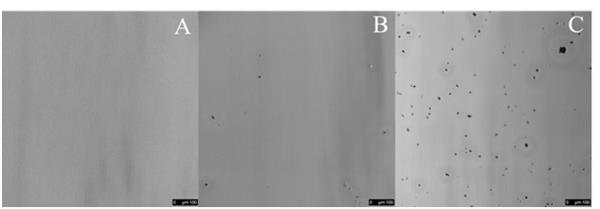Evolution of Irreversibly Adsorbed Layer Promotes Dewetting of Polystyrene Film on Sapphire
作者:Xu Li, Xiaolin Lu*
關(guān)鍵字:irreversibly adsorbed layer, dewetting, SFG, PS film
論文來源:期刊
具體來源:Macromolecules, 2018, 51 (17), pp 6653–6660.
發(fā)表時間:2018年
和頻振動光譜和光學(xué)顯微實(shí)驗(yàn)顯示,對高分子薄膜熱處理的過程即為基底界面上形成不可逆吸附高分子鏈層的過程。隨著熱處理的進(jìn)行�,這一層高分子繼續(xù)演化,包括單一吸附的高分子鏈形成更多的吸附位點(diǎn),界面上形成的Trains發(fā)生局部的松弛過程。我們直接關(guān)聯(lián)和證實(shí),這一層不可逆吸附的高分子鏈層促進(jìn)了其上薄膜自憎去潤濕的發(fā)生�。
https://pubs.acs.org/doi/full/10.1021/acs.macromol.8b01141


Dewetting of a polymer thin film is directly correlated to the interface with the substrate. We thus, combined sum frequency generation (SFG) vibrational spectroscopy and laser scanning confocal microscopy (LSCM) to trace both the interfacial molecular structural and macroscopic morphological evolutions of the polystyrene (PS) thin film on top of the sapphire substrate upon annealing, till happening of dewetting. To reveal the molecular structure of the irreversibly adsorbed layer over the annealing time, a solvent-leaching method was adopted to uncover it from the polymer thin film on the substrate. Experimental results demonstrate, the local structural evolution of the irreversibly adsorbed layers, including replacement of adsorption sites (trains sequences) from different chains to those from single chains and local structural relaxation of the trains sequences, significantly promoted the dewetting. The dewetting of the PS thin film was actually accompanied with such structural evolution of the irreversibly adsorbed layer. We believe, this experimental investigation on highlighting the irreversibly adsorbed layer can provide the molecular level insight on how the macroscopic dewetting happens for a polymer thin film on a substrate.